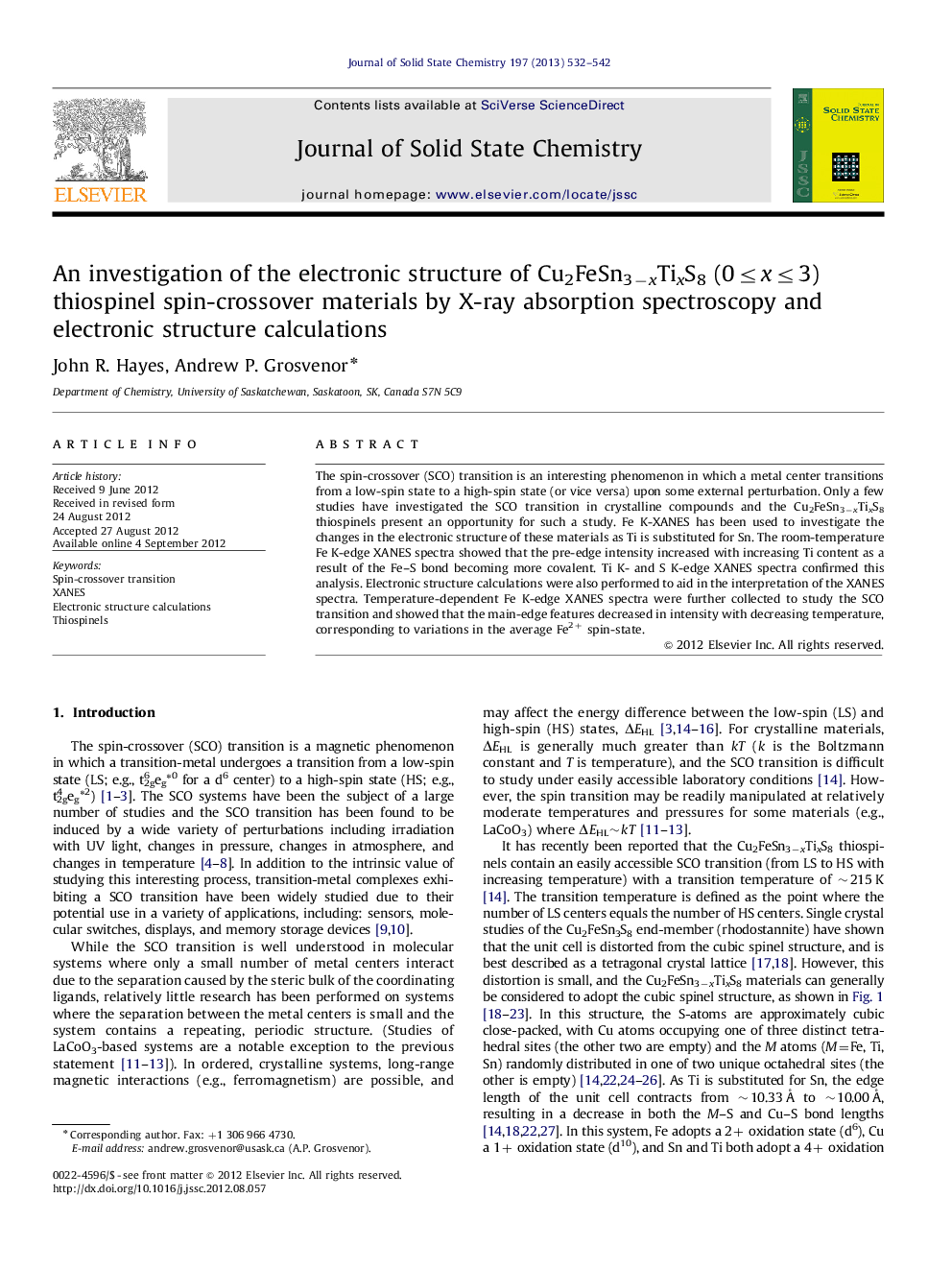| Article ID | Journal | Published Year | Pages | File Type |
|---|---|---|---|---|
| 1330141 | Journal of Solid State Chemistry | 2013 | 11 Pages |
The spin-crossover (SCO) transition is an interesting phenomenon in which a metal center transitions from a low-spin state to a high-spin state (or vice versa) upon some external perturbation. Only a few studies have investigated the SCO transition in crystalline compounds and the Cu2FeSn3−xTixS8 thiospinels present an opportunity for such a study. Fe K-XANES has been used to investigate the changes in the electronic structure of these materials as Ti is substituted for Sn. The room-temperature Fe K-edge XANES spectra showed that the pre-edge intensity increased with increasing Ti content as a result of the Fe–S bond becoming more covalent. Ti K- and S K-edge XANES spectra confirmed this analysis. Electronic structure calculations were also performed to aid in the interpretation of the XANES spectra. Temperature-dependent Fe K-edge XANES spectra were further collected to study the SCO transition and showed that the main-edge features decreased in intensity with decreasing temperature, corresponding to variations in the average Fe2+ spin-state.
Graphical abstractThe Cu2FeSn3−xTixS8 spin-crossover materials have been investigated by XANES. The pre-edge region of the Fe K-edge spectra increases with greater Ti incorporation because of the Fe–S bonds becoming more covalent.Figure optionsDownload full-size imageDownload as PowerPoint slideHighlights► Cu2FeSn3−xTixS8 thiospinels were investigated by XANES. ► The covalency of the Fe–S and Ti–S bonds increases with greater Ti incorporation. ► T-dependent Fe K-edge XANES spectra were collected to investigate SCO transitions. ► Covalent bonding makes study of the SCO transition difficult by Fe K-edge XANES. ► The bonding interactions were investigated through examination of S K-edge spectra.
